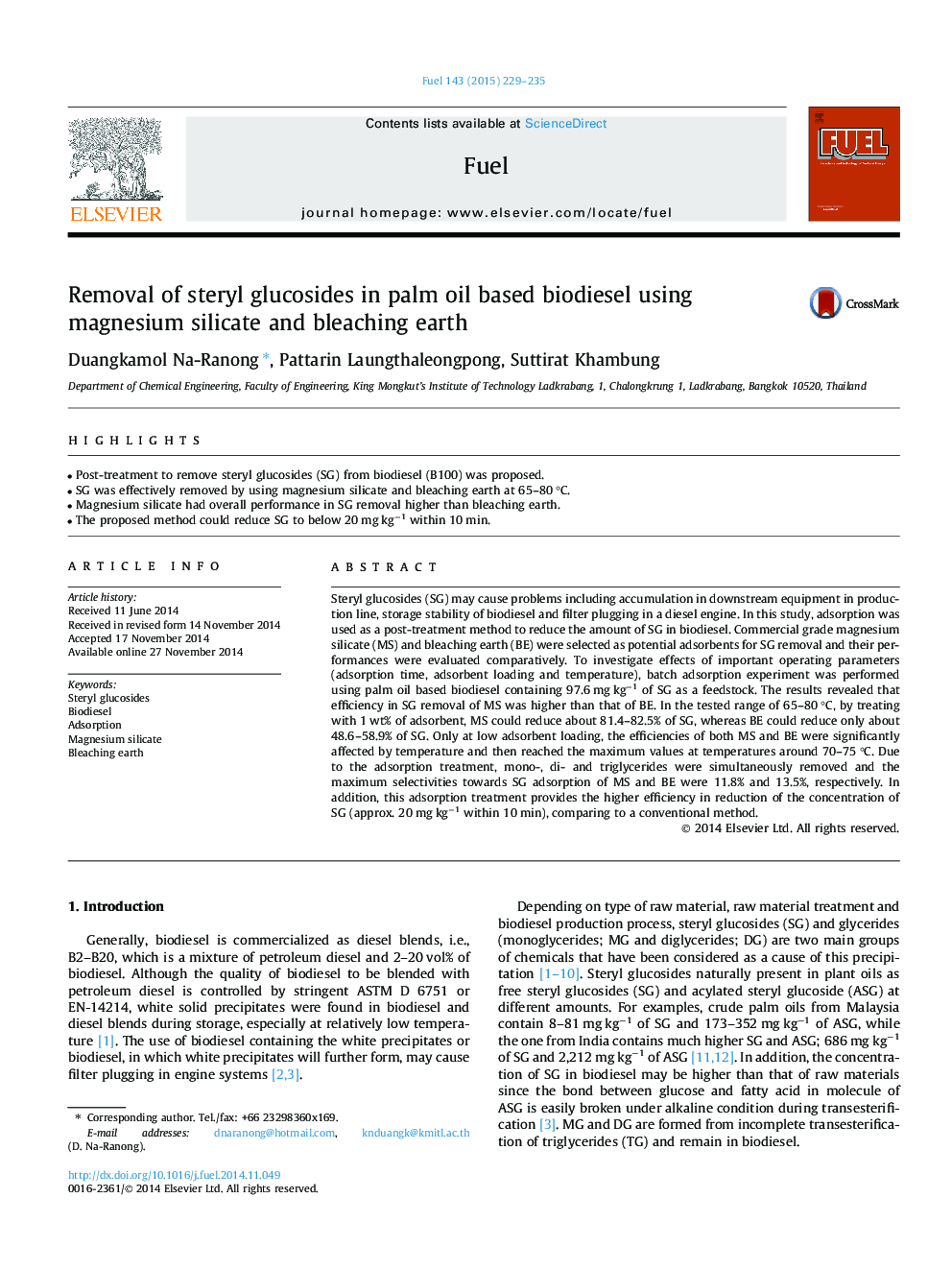| Article ID | Journal | Published Year | Pages | File Type |
|---|---|---|---|---|
| 6635794 | Fuel | 2015 | 7 Pages |
Abstract
Steryl glucosides (SG) may cause problems including accumulation in downstream equipment in production line, storage stability of biodiesel and filter plugging in a diesel engine. In this study, adsorption was used as a post-treatment method to reduce the amount of SG in biodiesel. Commercial grade magnesium silicate (MS) and bleaching earth (BE) were selected as potential adsorbents for SG removal and their performances were evaluated comparatively. To investigate effects of important operating parameters (adsorption time, adsorbent loading and temperature), batch adsorption experiment was performed using palm oil based biodiesel containing 97.6 mg kgâ1 of SG as a feedstock. The results revealed that efficiency in SG removal of MS was higher than that of BE. In the tested range of 65-80 °C, by treating with 1 wt% of adsorbent, MS could reduce about 81.4-82.5% of SG, whereas BE could reduce only about 48.6-58.9% of SG. Only at low adsorbent loading, the efficiencies of both MS and BE were significantly affected by temperature and then reached the maximum values at temperatures around 70-75 °C. Due to the adsorption treatment, mono-, di- and triglycerides were simultaneously removed and the maximum selectivities towards SG adsorption of MS and BE were 11.8% and 13.5%, respectively. In addition, this adsorption treatment provides the higher efficiency in reduction of the concentration of SG (approx. 20 mg kgâ1 within 10 min), comparing to a conventional method.
Related Topics
Physical Sciences and Engineering
Chemical Engineering
Chemical Engineering (General)
Authors
Duangkamol Na-Ranong, Pattarin Laungthaleongpong, Suttirat Khambung,
